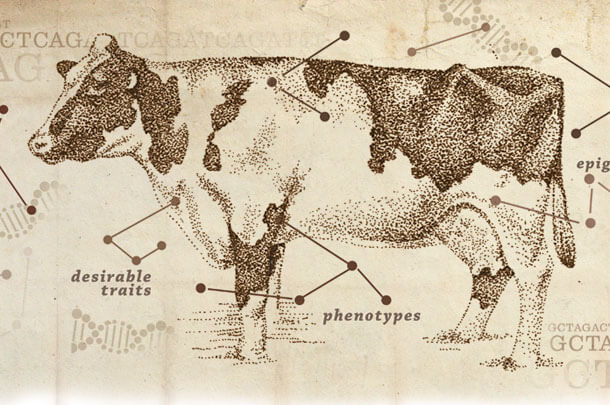
Livestock farming is one of the important sectors in Indonesia. Currently, the government has launched numerous programs to enhance the quality and quantity of livestock farming in Indonesia, particularly in the cattle sector, in order to achieve self-sufficiency in animal protein. One of the efforts to achieve this goal is through selection programs. Selection is crucial for improving the quality of livestock, whether in terms of production or reproduction. Selection is the process of choosing animals with the best genetic advantages or those above the average of the population, thus becoming preferred animals. Now, there is a term in the selection program that is critical for the success of the selection program, and that is the Estimated Breeding Value or EBV.
What is EBV?
EBV, also known as Breeding Value, is a measure that reflects the ability to pass down genetic traits from parents to offspring. In calculating the EBV, an individual's performance within a group is compared directly to the group's average performance, with the caveat that the measurements are taken at the same age, under the same management, and of the same gender.
EBV is expressed in measurement units for each quantitative trait to be displayed. For instance, the EBV for weaning weight of cattle A is +30kg, indicating that cattle A has a genetic quality that is 30kg more than the population's average for weaning weight. Another example is the EBV for mature equivalent adult weight of cattle B, which is -40kg, indicating that cattle B has a genetic quality that is 40kg lower than the population's average.
Why Use EBV?
Many economically valuable traits in animals may not be visibly apparent during the selection process. EBV is a proven tool for predicting economically valuable traits in livestock, such as growth rate, reproductive efficiency, carcass quality, and disease resistance.
Desirable Traits and EBV Values for Selection
Selection doesn't only consider EBV values for one trait; it should also consider other relevant EBV values based on the selection objectives. For instance, if the goal is to obtain cattle with good productivity, it's not just the EBV for birth weight that matters, but also weaning weight, mature weight, and even calving ease EBV. Below are the traits typically used in selection:
- Calving ease (%) reflects ease of calving, birth weight, and gestation length. A positive EBV value indicates good calving ease or minimal calving difficulties.
- Birth Weight (kg) is the weight of the calf shortly after birth. In addition to birth weight, parameters such as 200-day weight, 400-day weight, 600-day weight, and mature weight are used to measure productivity.
- Scrotal Size (cm) is measured when the cattle are 400 days old. Scrotal circumference reflects the reproductive ability of males, especially in semen production. Scrotal size is also highly positively correlated with mature age.
- Milk (kg) reflects the dam's milk production capacity. This parameter can also be used for selecting bulls, indicating that the female offspring of that bull will have production capacity consistent with its EBV.
- Days to Calving (days) reflects the fertility of the animal. It's measured from the first mating to calving. A negative Days to Calving value indicates high fertility.



